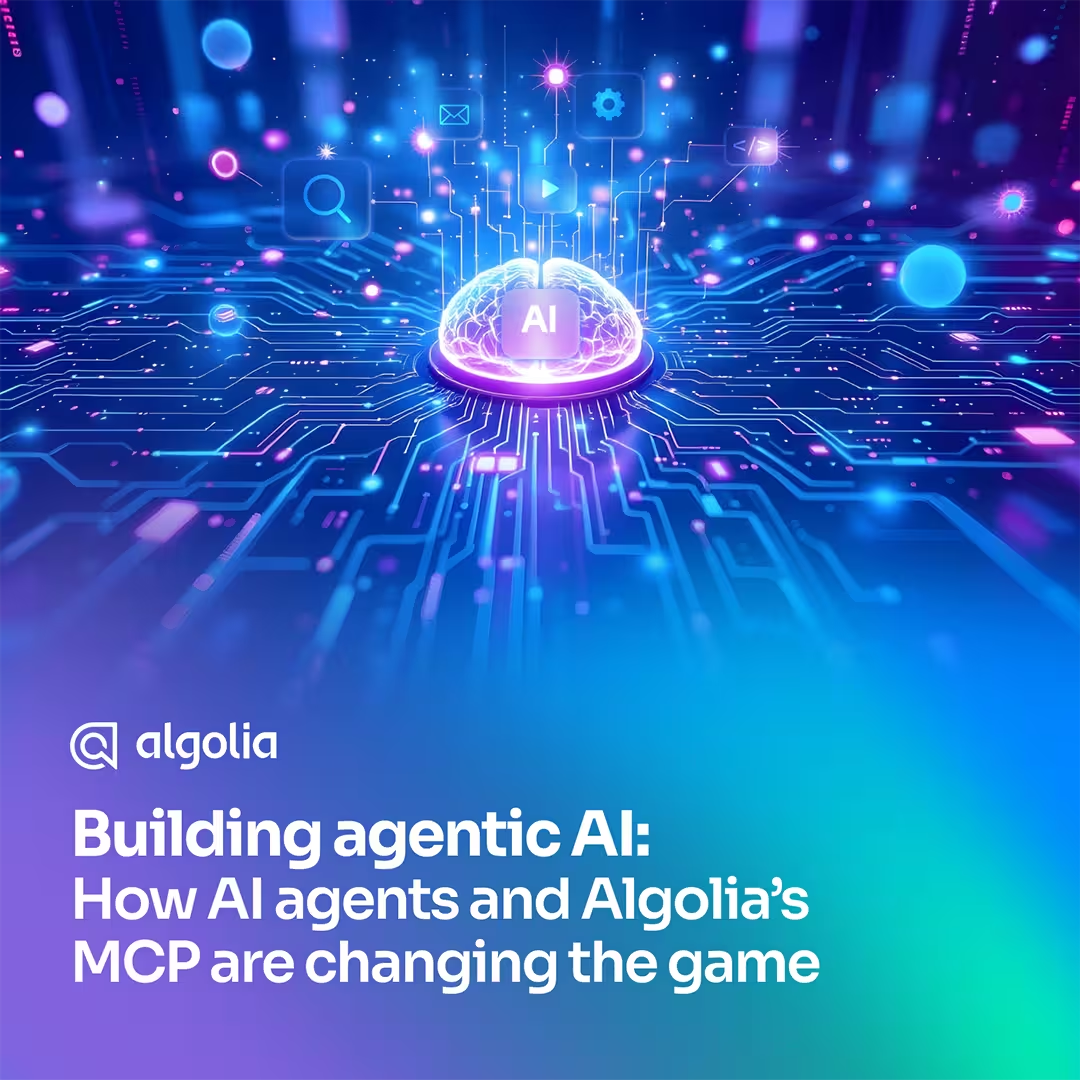Fueled by more data and supported by sophisticated machine learning algorithms, the tools that make product recommendations work have rapidly advanced. AI recommendations are now vastly more dynamic, accurate, precise, and predictive than they were a few years ago.
And those advancements are paying off. Research by McKinsey shows that sites that have invested in personalization have 40% higher revenue than those who do not.
As more websites leverage AI to tailor the site experience for each customer, visitors increasingly expect recommendations on every search and discovery journey.
The same McKinsey report indicates that
71% of customers share this expectation. When experiences aren’t tailored, 76% of shoppers express frustration.
That means sites that are late to getting on the recommendation bandwagon – or whose recommendations miss the mark – risk eroding customer trust or losing customers to a competitor site.
Organizations today can’t afford to lose customers for any reason. Personalization through high quality product recommendations is the strongest tool available to keep site visitors satisfied, engaged, and converting.
In this eBook, we provide an overview of AI-powered recommendations and explain how they generate personalized content predictions. We’re lifting the hood on recommendation models and demonstrating how AI boosts their pattern recognition and predictive capabilities. Lastly, we’ll show you how deploying AI-driven recommendations nurtures and strengthens the bonds between brands and customers, translating into increased conversions and higher value orders.
Recommended systems: past and present
When people scroll through websites and apps, they usually have an inkling of what they’re looking for. But no one has time to look at everything. Recommendation systems were designed to help customers and drive business by narrowing down the field of purchase possibilities for each unique visitor.
Recommendation models work by creating user profiles of browsing patterns and preferences based on past user activity. Those profiles are then compared and matched with item attributes and other site interactions to predict what the user wants.
Historically, recommendation models evaluated people’s immediate actions and ratings: for instance, what they clicked or didn’t click and how they rated products.
If someone visited a news website with dozens of articles to choose from, or an online bookstore with thousands of selections, a recommender system would show which articles or books were most liked. While the model considered user activity, it was often just a popularity contest. Select items emerged as winners but weren’t targeted to individual tastes.
The technique kept visitors exploring but was difficult to scale. A website always has a “most popular” item, but not every shopper wants it. As the internet advanced and ecommerce grew, recommendations evolved. Amazon burst onto the scene with one of the most familiar – and lucrative – recommender systems.
When a shopper looked up a new item, the system examined their previous purchases and calculated a list of other “related” items based on differential probabilities. Item B was related to item A if people who bought A were more likely to buy B than the average Amazon customer.
Following that initial shopping experience, when shoppers returned to Amazon, they saw new suggestions related to their previous searches. The technique made major inroads in ecommerce such that now, decades later, recommendations are a mainstay of ecommerce websites, apps, and other digital service platforms.
The data behind AI suggestions
Currently, AI is reaching new heights daily and dazzling us with its capabilities. While the underlying principle of older recommendation systems remains intact, they’re now augmented by sophisticated machine learning techniques that process more data across more parameters through neural networks designed to mimic human learning patterns.
Data fuels recommendations. Whenever people use sites and apps, they click, look, pause, spend time thinking, and make choices to look or buy. These actions translate into behavioral patterns and proof of interests and preferences — ripe for deeper analysis, comparison, and matching.
With data collected from as many touch points as possible, group and individual customer profiles are built that form the basis for high quality recommendations.
Along with demographics, critical user activity data includes:
- Clicks
- Browsing history
- Purchase history
- Browsing pathways
- Search terms
- Length of the overall session
- Time spent browsing individual items
- Number of times returning to the same content
Product data is also part of the analysis. To round out customer profiles and make recommendations accordingly, AI parses product descriptions, analyzes the categories users click most frequently, and considers typical price points.
The best recommendation systems also gather and analyze contextual information. Time of day, seasonality, geographical details, and local weather are important attributes that indicate what people are searching for and help tailor product suggestions. Someone searching for an umbrella on a rainy day needs recommendations for inventory that’s in stock and available nearby.
Device data can also provide clues about shopper intent and help shape better recommendations. Mobile searches are associated with quicker, impulse buys while desktop browsing tends to mean longer, deeper research for higher-priced items.
The benefits of AI recommendations
Predictive power leveraged for personalization makes a lasting impact on the customer relationship. When a website automatically surfaces content that you’re genuinely interested in, there’s an impression that the brand understands you. An online bookstore can analyze thousands of browsing sessions and past purchases to determine that fans of George Orwell’s 1984 will positively respond to a recommendation of Ray Bradbury’s Fahrenheit 451. That predictive power helps cultivate deep and lasting customer loyalty.
Furthermore, a tailored experience is something customers increasingly look for. In one survey, 45% of respondents said they would leave a site due to a lack of personalization.
AI recommendations provide:
- Better engagement
When customers make a subsequent visit and find a carousel of images with the heading, “Based on items you viewed recently,” it encourages them to spend more time browsing. It entices shoppers to explore products that complement their previous purchases, which increases the likelihood of another conversion.
- Enhanced customer retention
Statistics show that 56% of customers are likely to return to a website when it provides product recommendations. When AI tailors these recommendations to suit a shopper’s unique tastes, there’s a corresponding boost to customer loyalty.
- Continuous improvement
Gathering user data not only benefits machine learning algorithms and makes recommendations better, but those patterns feed back into merchandising and business processes. They help you refine your product offering, build better marketing campaigns, and make timely inventory decisions.
- Deeper discovery
People don’t always know what’s available. AI recommendations help maximize catalog discovery. When shoppers find new items and uncover relevant information, their experience is memorable. They’ll bond with a site or app that is a reliable discovery partner.
AI recommendations beyond ecommerce
While using AI to tailor recommendations is most familiar on retail sites, the technique is readily applicable to other B2C, B2B and enterprise contexts.
- FAQ and education: Help people find information on topic areas that interest them faster with AI recommendations
- Navigating media: Use AI recommendations to suggest what to read, stream, or listen to next
- Social platforms: Help site visitors navigate busy social platforms by suggesting accounts to follow or topics to explore based on AI analysis of past likes, views, and engagement
- Enterprise search: Analyze site activity to predict what your employees need and make AI recommendations to help them do their jobs more efficiently and effectively
The AI boost to your bottom line
Amazon’s decades-long market success shows what constantly improving recommendations can do for revenue. More recently, a study by Barilliance showed that AI-powered recommendations accounted for an astounding 31% of ecommerce revenues. With a machine learning recommender in place, adding an “Items on your wish list” sidebar to your site or a “Frequently bought together” window at checkout can be a profitability gamechanger.
Higher quality recommendations translate measurably into profits through increased conversions and increasing average order value. If your platform makes a meaningful suggestion, it increases the likelihood that your customer will purchase additional items.
- “Buying a campus sweatshirt? Students like you bought sweatpants, too!”
- “Like peanut butter? Try our
small-batch handmade jelly.”
- “Buying a beach towel? Don’t
forget a broad-spectrum sunblock.
Like these examples, recommendations are cross-selling opportunities. The more cross-sell conversions your recommendations generate, the greater the boost to your profit margin.
When a customer lingers on an item or places it in their shopping cart, it’s the perfect time to show them more of your catalog. AI recommendations surface similar or complementary items other shoppers bought, products that broaden discovery beyond the user’s search query, and relevant items that “go with” items in their cart.
AI Recommendations have been shown to drive significant engagement. On Netflix, 80% of viewing hours are driven by recommendations. Netflix researchers attribute $1 billion per year in revenue to its special combination of personalization and recommendations. By leveraging existing AI capability through recommendations, your organization can achieve similar gains.
Next step: AI recommendations from a site search leader
As AI continues to evolve and organizations harness its benefits, the technology has evolved from a trend to a business imperative. Similarly, AI-powered recommendations can no longer be seen as an extravagant extra for a website or app, but a feature that’s required to ensure customer satisfaction at all stages of the search and discovery journey.
AI recommendations from Algolia’s API-first platform provide near-real-time product discovery that scales as your product catalog and customer base grow and evolve. We help over 17,000 organizations around the world process 1.7 trillion searches.
Those using our dynamic recommendation tools have seen dramatic improvement in the following KPIs:
+150% purchase value
+13% overall site conversion
-24% bounce rate
How AI improves content recommendations
AI recommendation systems use algorithms to generate predictive statistical models that forecast user behavior. Machine learning identifies patterns in shopper activity and provides insights about how people and products are related. The deeper and more granular the statistical models are, the more accurately they can pattern and predict the interests and needs of individual customers.
AI is context-aware and never stops learning
AI recommendation systems not only handle complex data representations and provide rich results, but they also get smarter as time goes on. Constantly funnelling more user data makes AI algorithms context-aware, with the ability to continuously learn and adapt. Predictive models are always evolving to account for changing user interests, trends, and different shopping contexts.
Context-awareness
When a shopper from Canada looks for bathing suits in winter, the AI might correlate the search with vacation-related browsing and suggest travel gear, like bags or travel pillows. When a shopper in Hawaii browses for swimming suits, the AI generates a statistical model that accounts for tropical weather, recommending complementary products like sunscreen, flip flops, or sunglasses.
Continuous learning
When a shopper who purchased business casual pants and blazers in the past starts looking at informal jumpsuits, the AI recommendation engine instantly recognizes the customer’s new retail focus. The predictive model adapts seamlessly to include jumpsuits and overalls among the product suggestions.
AI discovers insights you can’t see
An AI recommendation system can instantly discover that a significant number of people who buy one item also buy related items. But AI algorithms aren’t just faster at identifying high quality interactions. They can reveal surprising patterns and unexpected correlations that even the most experienced marketing teams can’t detect.

AI understands user intent
One of AI’s greatest benefits is its natural language understanding capability. Large language models (LLMs) can pick out user sentiments and themes in search queries, regardless of the words used and despite typos. Three shoppers might all have a short-sleeved shirt in mind when they type “cute top,” “relaxed tee” or “women’s T-shirt” into the search toolbar. Despite different wording, AI recommenders know what each user wants to see and surfaces relevant content.
The flipside is when users know what they’re looking for, but don’t have the words to describe it. Machine learning models trained on search history and customer demographics enable AI algorithms to predict what customers want and provide suggestions even from loose and patchy text descriptions.
What’s in a hybrid AI recommendation system
When ample data is available, recommendation systems will use accurate and efficient filtering. Recommendation models can approach the problem from two different directions, emphasizing different classes of data. The first model, collaborative filtering, collects data about one user’s activity and preferences and makes predictions based on comparisons to similar groups of users. If a new user shares preferences and behaviors of shoppers in cluster A and cluster A shoppers all bought a certain pair of gold hoop earrings, there’s a strong chance the new customer will want to see those earrings as well.
The second model, content-based filtering, focuses on catalog items themselves and their descriptions and features. This type of filtering organizes items into groups based on similar features, such as category, genre, color, style, author, etc. Recommendations are based on user interactions with items with overlapping descriptive words or metadata attributes.
“If you like Walt Disney’s Frozen, you might also like Moana,” is an example of content-based filtering.
The models share the same drawback in the “cold start problem,” which is the lack of information about new users. To make personalized recommendations, you need to have some preliminary data. To address the issue, many brands gather simple starter data when a user first lands on the site to match them with a cluster and jumpstart the machine learning analysis.
The most powerful AI recommendation engines adopt a hybrid approach. They combine collaborative filtering, content-based filtering, and AI. Hybrid models tailor suggestions based on user preferences and activity history to recommend matching content. Netflix is a standout example of the hybrid approach. From thousands of potential viewing options, it makes recommendations that correlate the subscriber’s watch history (collaborative filtering) with content clusters grouped according to feature similarities (content-based filtering).



